Carolyn Mary Kleefeld – Contact Us
Please fill out form as completely as possible so we can contact you regarding your request.
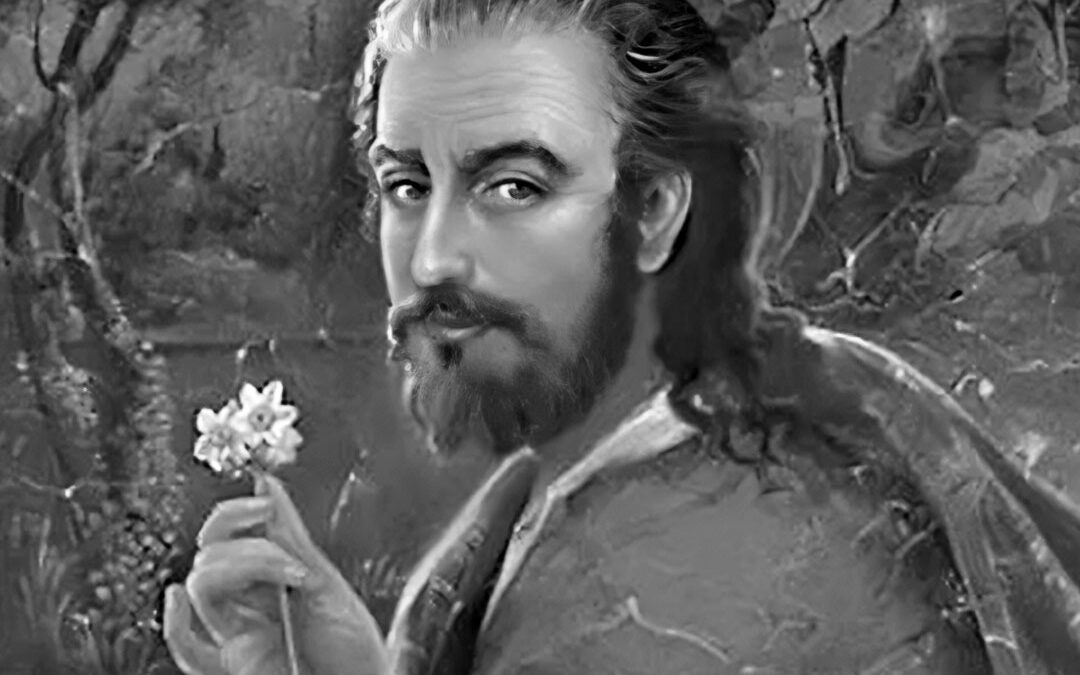
A few weeks ago I wrote a profile about the 14th Century Persian poet Rumi. A passion for Rumi’s poetry led me to the work of another 14th Century Persian poet, Hafez, whose beautiful spiritual poetry is equally insightful and inspirational. Carolyn and I have both enjoyed Hafez’s wonderful lyrical poems over the years, and his collected works are often regarded as some of the most treasured literature to emerge out of Persia.
Commonly known by his pen name “Hafez” (or “Hafiz”), the late Sufi poet was born as Khwāje Shams-od-Dīn Moḥammad Ḥāfeẓ-e Shīrāzī sometime between 1310 and 1325 in Shiraz, which is located in present-day Iran. Although accounts vary, most scholars think Hafez was born in 1315 or 1320. Not much is known for certain about Hafez’s early life, so historians rely on anecdotes to try and understand what happened, and separating fact from legend about Hafez is tricky, as many mythical stories were written about him after his death.
Hafez is said to have memorized the entire Quran when he was young, by listening to his father read it. He was given the name “Hafez” at an early age, which was a title given to those who had memorized the Quran by heart, and means “memorizer and safe keeper.” Hafez must have had an incredible memory, for he is said to have memorized numerous other writings as well, including the works of Rumi.
Hafez had two brothers; his father was a coal merchant who died young and left the family in debt. Hafez’s uncle helped to raise him, and he had to leave school to work for his family, first in a drapery shop and then in a bakery. While working at the bakery, Hafez had to deliver bread to a beautiful young woman named Shakh-e Nabat, who he fell in love with, and to whom many of his poems were addressed.
Enraptured by this young woman’s beauty, but knowing that his love for her would not be returned, he supposedly held a 40-day-and-night “mystic vigil” at the tomb of Baba Kuhi (a 10th Century Persian Sufi), where he encountered an angel. This was a life-changing event for Hafez, as the angel led him into his pursuit of a spiritual union with the divine.
Hafez became a Sufi, a practitioner of the mystic branch of Islam. He received a classical religious education, lectured on the Quran and other theological subjects, and he wrote commentaries on religious classics. Hafez married when he was in his twenties and had one child.
Hafez mostly wrote lyrical poetry, or what is known as “ghazals,” which are lyric poems with a fixed number of verses and a repeated rhyme, and usually set to music. Some of the themes of Hafez’s ghazals include love, faith, and exposing hypocrisy. He was also known to ignore the religious taboos of his time, and he found humor in some of his society’s religious doctrines. Hafez was a court poet, and as such, was supported by patronage from several successive Persian regimes, although he briefly fell out of favor with one of the rulers due to his mocking of inferior poets.
Hafez wrote approximately 994 poems, which were collected into (at least) 5 volumes, and his poems have been translated into all major languages. The Complete Divan of Hafez, which contains 793 of his ghazals and other spiritual love poems, is available in English translation. Translations of his collections Faces of Love, Beloved: 81 Poems from Hafez, and The Collected Lyrics of Hafiz of Shiraz are also available.
At the age of 60, Hafez is said to have begun another 40-day-and-night vigil, by sitting inside a circle that he had drawn. On the 40th day, it was said that he had achieved “cosmic consciousness” and attained spiritual union with the divine.
Hafez died in 1390. His tomb is located in Shiraz, the city of his birth. The Tomb of Hafez, known as Hāfezieh, is a popular destination for tourists. It is composed of two memorial structures erected on the northern edge of Shiraz, which house the marble tomb of Hafez.
Today Hafez is the most popular poet in his native country, and October 12th is celebrated every year as Hafez Day in Iran. His spirit is alive and well here too. His poetry is read widely, and I see Hafez’s wisdom shared on social media memes almost daily.
Some of the quotes that Hafez is remembered for include:
I wish I could show you… the astonishing light of your own being.
You, yourself, are your own obstacle; rise above yourself.
Your heart and my heart are very, very old friends.
What we speak becomes the house we live in.
This place where you are right now, God circled on a map for you.
The heart is a thousand-stringed instrument that can only be tuned with love.
For I have learned that every heart will get what it prays for most.
An awake heart is like a sky that pours light.
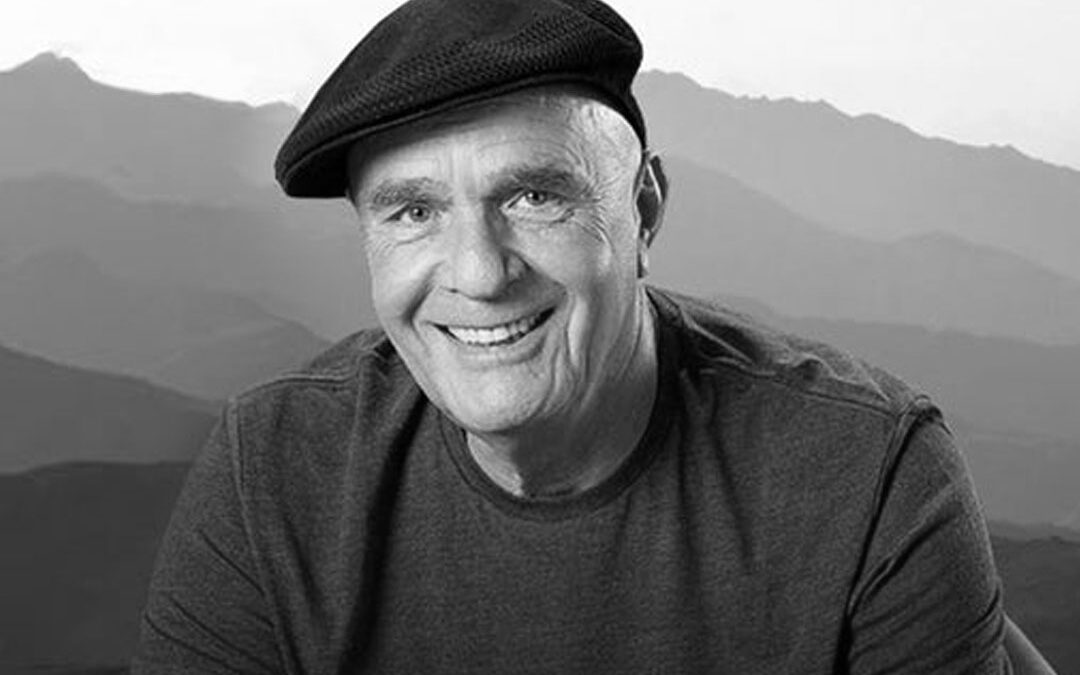
Although I recall seeing a book by the late Wayne Dyer in my mom’s library when I was a teenager, it was Carolyn who first introduced me to his writings years later, during a time of great difficulty in my life. Carolyn says he changed her life and is her foremost muse. I found Dyer’s wise, insightful, and encouraging words to be extremely helpful at the time and he has remained a powerful inspiration.
Dr. Wayne Dyer was an internationally renowned motivational speaker and self-help author, who published more than 40 books in the fields of self-development and spiritual growth, including 21 New York Times bestsellers.
Born in Detroit, Michigan in 1940, Dyer had a difficult childhood. He spent the first ten years of his life in an orphanage, and then in foster homes because his father left the family when he was a child. After graduating from high school, Dyer served 4 years in the U.S. Navy. Then, in 1970, he completed a doctorate in educational counseling at Wayne State University. His dissertation was titled: Group Counseling Leadership Training in Counselor Education.
Early in his career, Dyer worked as a guidance counselor with high school kids in Detroit. He went on to have a successful private therapy practice and then to teach counseling psychology at St. John’s University in New York City as an associate professor. Around this time, a literary agent approached Dyer and encouraged him to write a book about his ideas.
Dyer took his advice, and in 1976 he wrote Your Erroneous Zones. The book offers step-by-step advice on how to break patterns with negative thinking and take greater control of one’s life. Dyer began driving across the country by himself, selling copies of Your Erroneous Zones from the trunk of his car, and this was how he began his career as a self-help author and motivational speaker. The book became the bestselling book of the 1970s, and one of the bestselling books of all time, selling around 100 million copies to date.
Dyer went on to write 20 more bestselling books and he produced a number of television specials for PBS. His books Wisdom of the Ages, Manifest Your Destiny, There’s a Spiritual Solution to Every Problem, The Power of Intention, and others have been featured as National Public Television specials.
Dyer also created many of his own audio and video programs, and he appeared on thousands of television and radio shows, including the Oprah Winfrey Show, The Tonight Show, and virtually every major talk show at the time. Dyer’s feature film, The Shift, was released in 2009, and a film based on his life, My Greatest Teacher, was released in 2012.
Dyer discovered that there was a widespread need for the principles of self-discovery and personal growth, and he sought to bring these ideas to a wider audience. His early work was influenced by psychologists Albert Ellis and Abraham Maslow, and it focused on themes such as self-actualization and motivation. Yoga guru Swami Muktananda influenced his later work and he focused more on spirituality, collaborating with physician Deepak Chopra on a number of projects.
Dyer was also a generous philanthropist, whose charitable contributions included donating a million dollars to his alma mater, Wayne State University, and raising over $150 million for National Public Television through his PBS specials.
Dyer left our world in 2015. According to Dyer’s official website, “His main message was that every person has the potential to live an extraordinary life. What’s more, it’s possible for every person to manifest their deepest desires — if they honor their inner divinity and consciously choose to live from their Highest Self.”
Carolyn has been close with Marcelene, Dyer’s wife and the birth mother of their 7 children. Here’s what she had to say about Carolyn’s book Immortal Seeds: Bearing Gold from the Abyss:
“Carolyn Kleefeld, my beloved heroine, in Immortal Seeds, paints on the page opposite her words of love for David Campagna. These paint her world for me. This love pulses a rapture rare of design and rarer still of existing. Oh, how I long for this to play differently. Yet it is perfection in its telling.”
Some of the quotes that Wayne Dyer is remembered for include:
Change the way you look at things and the things you look at change.
How people treat you is their karma; how you react is yours.
With everything that has happened to you, you can either feel sorry for yourself or treat what has happened as a gift. Everything is either an opportunity to grow or an obstacle to keep you from growing. You get to choose.
I am realistic – I expect miracles.
When the choice is to be right or to be kind, always make the choice that brings peace
Begin to see yourself as a soul with a body rather than a body with a soul.
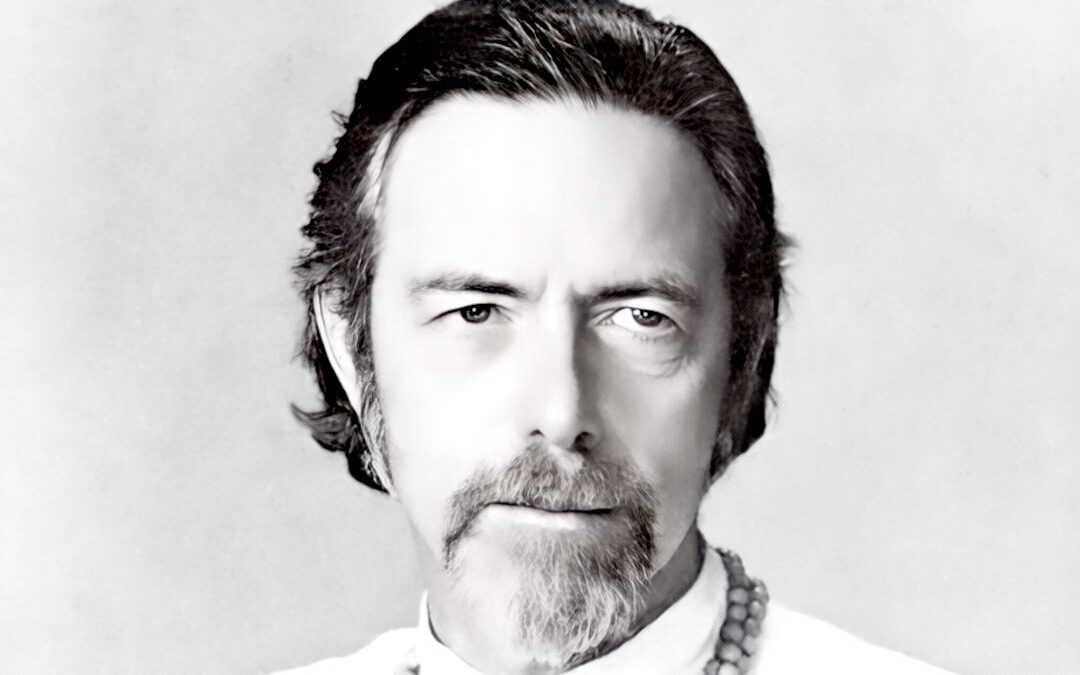
I began reading the work of Alan Watts when I was in high school; his books had a profound impact on me, and the late philosopher came up in a number of conversations that I’ve had with Carolyn over the years.
Born on January 6, 1915 (the same day and year that John Lilly was born) in Chislehurst, England, Watts was a British philosopher, writer, and speaker, who helped to bring Eastern philosophical thought to the West. Watts was a master at interpreting Buddhist, Taoist, and Hindu philosophy, and also at being able to clearly and simply explain it to a Western audience. His prolific writings and eloquent talks have a signature clarity, insight, and logic to them, which helps to make the sometimes seemingly paradoxical concepts of Eastern philosophy more accessible to the Western mind.
As a child, Watts experienced a “mystical dream” while he was ill with a fever, and his mother introduced him to artwork from the Far East; these influences were to affect the development of his life. He began writing original works at the age of 14, and as a teenager, Watts met D. T. Suzuki, the esteemed scholar of Zen Buddhism, which was also an important influence. When Watts was 15 he declared himself a Buddhist, joined the Buddhist Lodge, and became an active member.
In 1936 Watts attended the World Congress of Faiths at the University of London, where he studied the fundamental concepts of Indian and East Asian philosophy. During the 1930s he became particularly interested in Zen Buddhism, which he saw as a synthesis of Taoism, Confucianism, and Buddhism. In 1936 Watts published his first book, The Spirit of Zen, which he wrote when he was 19. Watts was working as a freelance writer by the time the book was published, and he moved to the United States in 1938 for Zen training in New York.
Watts never finished his Zen training— because “the method of his teacher didn’t suit him”— and left before being ordained as a Zen monk. He then entered Seabury-Western Theological Seminary, an Episcopal school in Evanston, Illinois, where he studied Christian scriptures, theology, and church history, attempting to blend Christian and Asian philosophy. His master’s thesis was published as a book, Behold the Spirit: A Study in the Necessity of Mystical Religion, and he was an Episcopal priest in Chicago for six years.
In 1951 Watts moved to San Francisco, where he joined the faculty of the American Academy of Asian Studies, and taught there until 1957. During this period, Watts also began broadcasting a weekly radio program at Pacifica Radio station in Berkeley, where he attracted a following of regular listeners. Throughout his life, the station continued to broadcast many of his recorded lectures, talks, and seminars, and they continue to broadcast them to this day.
In 1957 Watts published The Way of Zen, which became one of his most popular books. The book was unique in that it combined Eastern philosophical thought with Western ideas from general semantics and cybernetics. Watts suggested analogies from cybernetic principles that could be applicable to the Zen tradition. The book sold well and Watts began lecturing more widely.
In 1958 Watts toured parts of Europe with his father and met with the Swiss psychiatrist Carl Jung. During the 1960s Watts became good friends with Harvard psychologists Timothy Leary and Ram Dass, and he spent time at the legendary Millbrook estate in New York during its heyday, from 1963 to 1968. Watts had profound mystical experiences during this time, which are recorded in his book The Joyous Cosmology.
Watts died in 1973 in Mill Valley, California. Although I never got to meet him, Carolyn and I heard a lot of great stories about Alan from our beloved friends Nina Graboi and Oz Janiger; Oz was Alan’s physician and Nina had a close relationship with him.
Watts’ audio library consists of nearly 400 talks, and he wrote more than 25 popular books, including This is It, Cloud Hidden Whereabouts Unknown, Does it Matter?, and The Book on the Taboo Against Knowing Who You Are. An important theme that runs through his work is that humanity’s feeling of isolation and alienation is an illusion because all of creation is an interconnected whole. In his autobiography, In My Own Way, Watts said that the essential message of his life was to “integrate the spiritual with the material,” and he described himself as a “rascal.”
Some of the quotes that Alan Watts is remembered for include:
Trying to define yourself is like trying to bite your own teeth.
Man suffers only because he takes seriously what the gods made for fun.
The meaning of life is just to be alive. It is so plain and so obvious and so simple. And yet, everybody rushes around in a great panic as if it were necessary to achieve something beyond themselves.
The menu is not the meal.
Through our eyes, the universe is perceiving itself. Through our ears, the universe is listening to its harmonies. We are the witnesses through which the universe becomes conscious of its glory, of its magnificence.
Life is like music for its own sake. We are living in an eternal now, and when we listen to music we are not listening to the past, we are not listening to the future, we are listening to an expanded present.
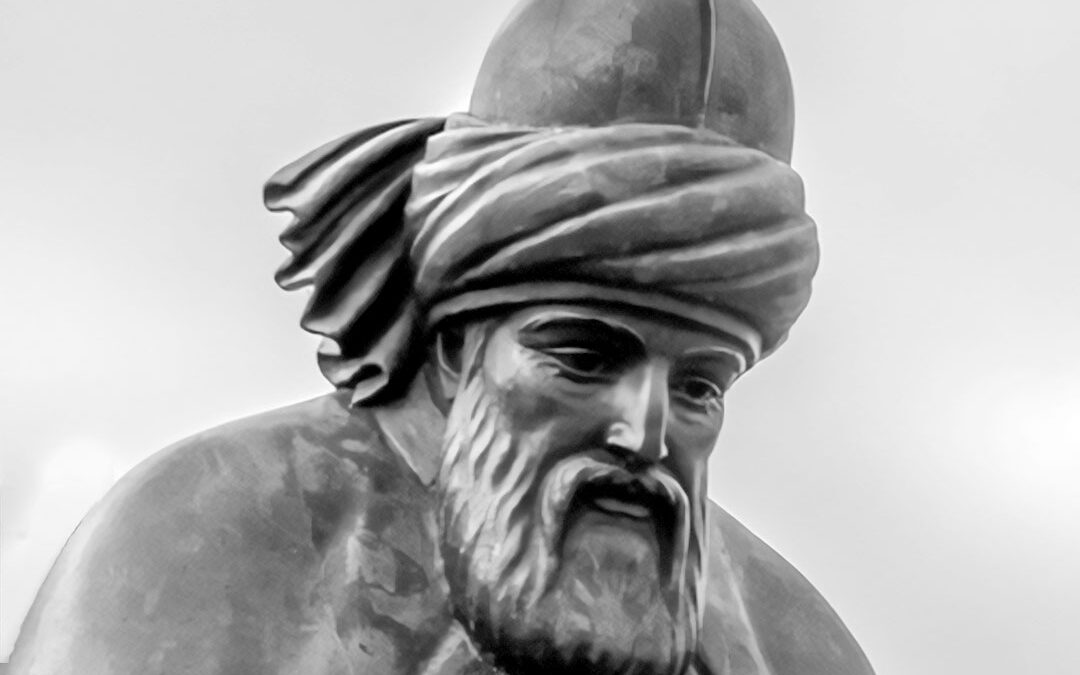
I began reading Rumi’s mystical poetry in the late 1990s when I first encountered a translation of his work by Coleman Barks, and he is someone that both Carolyn and I have been deeply inspired.
Jalāl al-Dīn Muḥammad Rūmī was a 13th Century Sufi mystic and Persian poet, who lived from 1207 to 1273. His poems have been widely translated into many languages, and he is one of the most popular and bestselling poets in the U.S.
Rumi was born to Persian-speaking parents, originally from the Balkh, which is now in Afghanistan. Rumi’s birthplace isn’t known for certain; scholars think that he was either born in Wakhsh, a village on the Vakhsh River in present-day Tajikistan or in the city of Balkh, which is in present-day Afghanistan. Rumi’s father was an eccentric Muslim teacher— a theologian, jurist, and mystic— who had a great influence on his son’s development.
When he was five years old, a young Rumi reportedly saw angels. Scholars have to tease apart legend from historical fact about Rumi’s past, but it is known that at the age of twenty-five, Rumi inherited the position of an Islamic teacher, when his father, the previous holder of the position, died.
For nine years, Rumi practiced Sufism as a disciple of Burhan ud-Din, and he became an Islamic Jurist, issuing legal rulings and giving sermons in the mosques of Konya. (Sufism is a branch of Islam that sees the religious practice as a means to oneness with God, and Sufis have traditionally infused their devotion with poetry and music.)
Rumi was known for his personal charm, as well as his great religious knowledge, and he brought musical instruments into prayer and practiced a whirling dance, that he believed helped the human soul to connect with the divine.
In 1244 Rumi met a member of the Sufi religious order named Shams-e Tabrizi (who had taken vows of poverty and austerity) that completely changed his life, and he became an ascetic.
Then, one fateful night in 1248, as Rumi and Shams were talking, Shams answered a mysterious knock at the back door. Shams went out the door and was never seen again. It was thought that he was murdered, and Rumi’s love for, and his bereavement over the death of Shams was expressed in a creative outpouring of lyric poems, known as the Divan-e Shams-e Tabrizi, and this is when Rumi began to seriously write poetry.
Rumi went on to write over 3,000 lyrical, rhymed poems called “ghazals,” and over 2,000 four-line rhyming poems called “robaiyat,” which often deal with themes of love and mystical union with God. Although his works were written mostly in Persian, he sometimes also wrote in Greek, Turkish, and Arabic.
In December 1273, Rumi fell ill, predicted his own death, and composed one final poem. He gave his followers special instructions to treat the night of his death like they would “a joyous wedding night,” and he planned his own funeral, with singers, musicians, and dancers. Rumi’s body was entombed beside that of his father, and a shrine was erected over his place of burial.
Rumi’s epitaph reads:
“When we are dead, seek not our tomb in the earth, but find it in the hearts of men.”
Rumi’s work lives on and many people know his quotes from memes commonly passed around Facebook and Instagram, as his spiritual wisdom transcends culture, religion, and time. Some of the quotes that Rumi is remembered for include:
You are not a drop in the ocean. You are the entire ocean, in a drop.
Raise your words, not voice. It is rain that grows flowers, not thunder.
This place is a dream. Only a sleeper considers it real. Then death comes like dawn, and you wake up laughing at what you thought was your grief.
As you start to walk on the way, the way appears.
What hurts you, blesses you. Darkness is your candle.
There’s a field somewhere beyond all doubt and wrongdoing. I’ll meet you there.
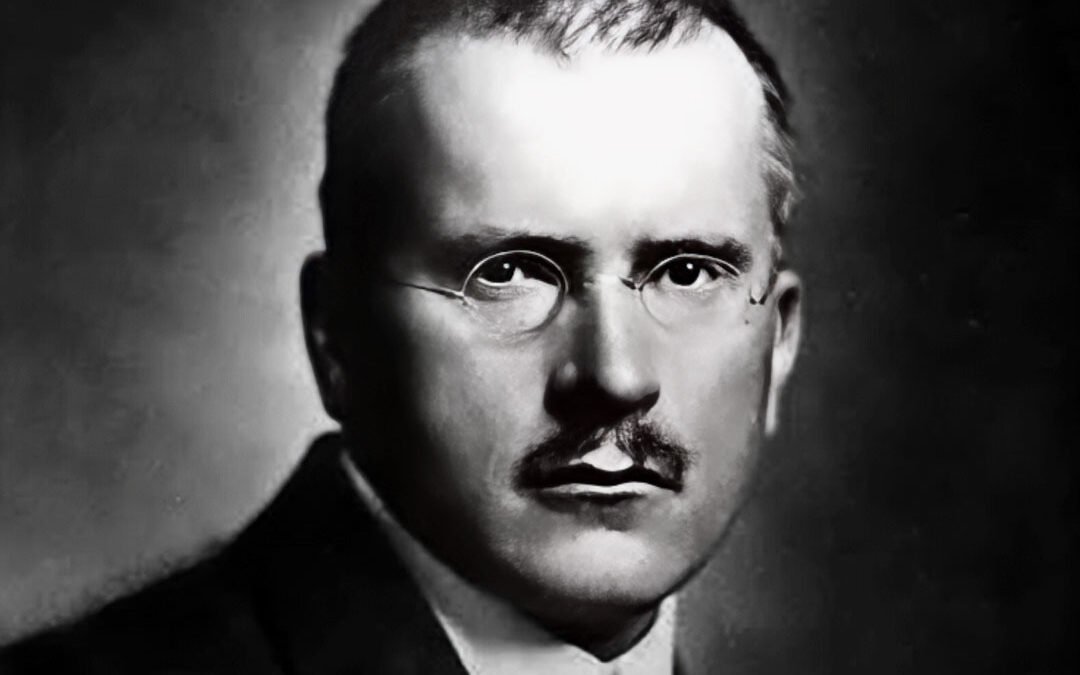
I began reading Carl Jung’s writings when I was in high school, and when I first met Carolyn, Jung’s work came up in our discussions a lot.
Carl Gustav Jung was a Swiss psychiatrist and psychoanalyst, who helped to revolutionize the field of psychology. Born in 1875, Jung has been described as a solitary and introverted child, with early aspirations to become a preacher or minister. However, after studying philosophy as a teenager, Jung decided against those religious aspirations and decided to pursue a career in psychiatry at the University of Basel instead.
In 1900 Jung moved to Zürich and began working at the Burghölzli psychiatric hospital, where he developed a relationship with the Austrian neurologist Sigmund Freud. Jung and Freud became close friends and built a strong professional association; for six years they cooperated in their work. However, in 1912 a split between these two intellectual titans developed when Jung published a manuscript titled Psychology of the Unconscious. This historic book created a theoretical divergence between the two men; after this their personal and professional relationship was damaged, and over the years they became increasingly bitter toward one another.
In a nutshell, Jung believed that there was more to the unconscious mind than Freud. According to both Freud and Jung, the unconscious mind is the mental reservoir of emotions, memories, and brain processes that are outside of our conscious awareness; yet influence our thoughts, desires, dreams, and actions. One basic difference between Freud’s and Jung’s theories of the unconscious mind was that Freud believed that it is purely the result of our personal development, while Jung believed that there was also a transpersonal dimension to it, what he called “the collective unconscious,” that was shared by all of humanity.
Jung saw evidence for the collective unconscious among the common elements found around the world in dreams, visions, myths, fairy tales, art, and other forms of cultural expression— what he called “archetypes.” Archetypes are those images, figures, character types, settings, and story patterns that, according to Jung, are universally shared by people across cultures.
In mainstream psychology, Jung is known for introducing many commonly used concepts to the field, and that have also been adopted by the culture at large — such as his models of psychological types, and his notions of the anima and animus, the Self, the shadow, and introversion and extroversion. Another idea that Jung developed that Carolyn and I have both found useful is the notion of “synchronicity.” Synchronicity is the coincidental occurrence of events that seem meaningfully related but cannot be explained by conventional mechanisms of causality. Synchronicities are those magic moments of strange association that just seem too personally meaningful to be mere coincidence — implying that we have some deep, psychic interconnection with the universe that can’t be easily explained through mechanistic science.
In addition to his work in psychology, and his prolific writing, Jung was also an artist, a builder, and a skillful craftsman. He built a small castle with 4 towers on the shore of Lake Zürich, known as the Bollingen Tower. Jung was known to have mystical, visionary, and psychic experiences. His psychological experiments between 1915 and 1930, where he engaged his mind with what he called the “mythopoetic imagination,” resulted in a series of “visions” or “fantasies” that were recorded as art and text in an illuminated calligraphic volume that became known as The Red Book. Hidden for years in a Swiss bank vault, this legendary manuscript was published posthumously in 2009. I’ve spent many an hour spellbound by this remarkable book; it’s a beautiful artwork and powerful spiritual insights.
Jung died in 1961. The last book that he wrote, Man and his Symbols, was published 3 years after he died. Princeton University Press published a 20-volume set titled The Collected Works of C.G. Jung, which contains Jung’s dissertation, essays, lectures, and letters from 1902 until his death. A number of his books weren’t published until after he died, and some of Jung’s manuscripts remain unpublished to this day.
Jung’s influence can be seen throughout Carolyn’s work. For example, an entry in Carolyn’s Alchemy of Possibility oracle is titled “Synchronicity,” and Carolyn’s painting Reflecting on my Shadow expresses Jung’s concept of the shadow — that dark side of the unconscious mind, the self’s emotional blind spot, which is composed of repressed ideas, weaknesses, desires, instincts, and shortcomings.
Some quotes that Carl Jung is remembered for include:
Until you make the unconscious conscious, it will direct your life, and you will call it fate.
The meeting of two personalities is like the contact of two chemical substances: if there is any reaction, both are transformed.
I am not what happened to me, I am what I choose to become.
A dream that is not understood remains a mere occurrence; understood it becomes a living experience.
Who looks outside, dreams; who looks inside, awakes.
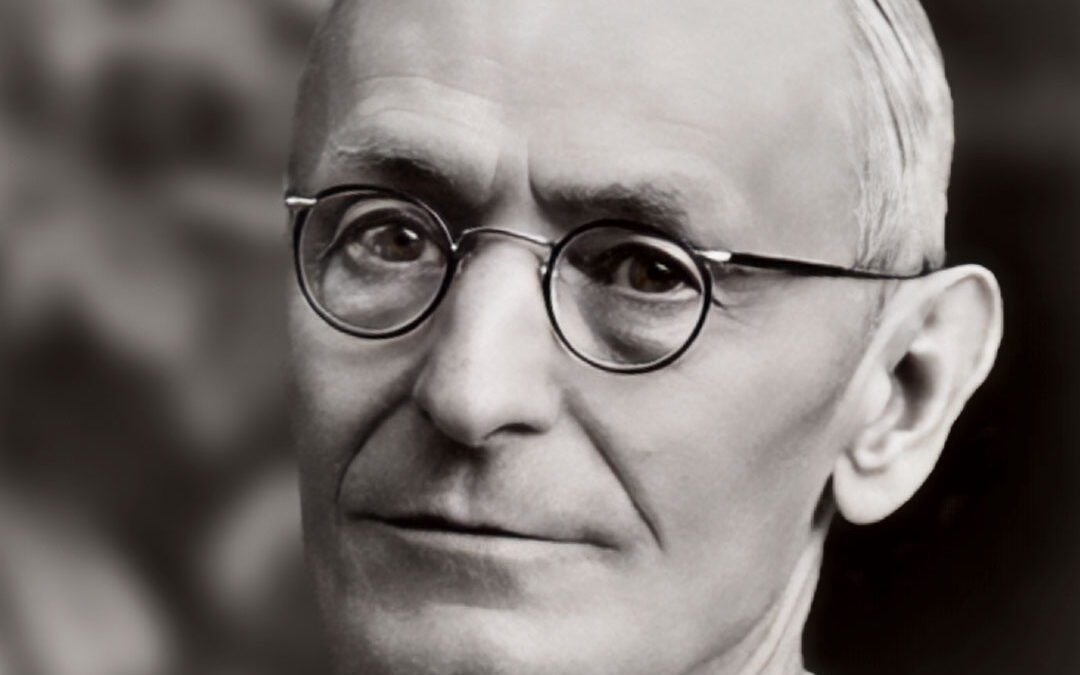
I was systematically reading through Hermann Hesse’s novels when I first met Carolyn in 1983, and we have both really enjoyed his inspiring books and other creative output.
Hesse was a brilliant German-Swiss novelist, poet, and painter who lived between 1877 and 1962. Some of his most well-known books include Siddhartha, Demian, Steppenwolf, and Magister Ludi: The Glass Bead Game, which are my favorites as well. Each book explores a similar theme, of an individual’s efforts to break free from the established modes of civilization, and begin a quest for self-knowledge and spiritual understanding.
Hesse was born in Calw, Germany and he later became a citizen of Switzerland. Hesse began working in a bookstore in Tübingen as a teenager, and at the end of his twelve-hour shifts, he worked on his own writing. His first publication came in 1896, with his poem Madonna in a Viennese magazine, and later that year this was followed by the publication of a small volume of his poetry titled Romantic Songs. Hesse’s first poetry collection wasn’t met with much success— it only sold 54 copies in two years— and Hesse’s mother didn’t like the poems, calling them “vaguely sinful,” which was upsetting to Hesse.
In 1899 Hesse began working at another bookstore in Basel, and spent much time alone, engaged in self-exploration. Due to an eye condition, in 1900 he was exempted from compulsory military service, and he suffered from nerve disorders and persistent headaches throughout his life.
In the early years of the last century, Hesse published more poems and some short prose in journals. In 1904 Hesse’s novel Peter Camenzind was published, and this was a breakthrough novel for him, as from this point on, Hesse could now earn a living as a writer. The novel became popular throughout Germany, and the Austrian neurologist Sigmund Freud praised Peter Camenzind as one of his favorite novels.
Hesse’s parents had a profound influence on his spirituality, and he said of his parents that, “their Christianity, one not preached but lived, was the strongest of the powers that shaped and molded me.” Self-exploration and spiritual development became important themes in many of Hesse’s writings. There was a ‘quest for enlightenment or self-realization’ theme in his books Siddhartha, Journey to the East, and Narcissus and Goldmund, and he often drew from Buddhism, Hinduism, and other Eastern philosophies in his novels. Hesse saw value in the varied forms of spiritual expression, and said, “For different people, there are different ways to God.”
Hesse is the author of 29 books. He also began painting when he was in his early 40s, and he created a legacy of around 3000 beautiful watercolors. The book Trees: An Anthology of Writings and Paintings collects Hesse’s poems and essays on the subject of trees and is accompanied by 31 of his watercolor illustrations, and the book Hesse as Painter collects 20 of his watercolors.
In 1946 Hesse received the Nobel Prize in Literature for his book Magister Ludi: The Glass Bead Game. However, despite Hesse’s status as a Nobel laureate, when Hesse died in 1962, his work wasn’t very well known in the United States. In fact, in the obituary that The New York Times published after Hesse’s death, said that his work was largely “inaccessible” to American readers.
This all changed in the mid-1960s when Hesse’s books suddenly became bestsellers in the U.S., and within the span of a few years, he became the most widely read and translated European author of the 20th century. The revival in popularity of Hesse’s works has been credited to their association with some of the popular themes of the 1960s counterculture, and according to Bernhard Zeller’s autobiography on Hesse, “in large part, the Hesse boom in the United States can be traced back to enthusiastic writings by two influential counterculture figures: Colin Wilson and Timothy Leary.”
Hesse’s work has had a considerable cultural influence. The band Steppenwolf took its name from Hesse’s novel with that title, and there is also a theater in Chicago called The Steppenwolf Theater. Throughout Germany, many schools are named after Hesse. Hesse’s novel Siddhartha required reading in my high school English class, which is how I first discovered his work.
Some quotes that Hermann Hesse is remembered for include:
“I have always believed, and I still believe, that whatever good or bad fortune may come our way we can always give it meaning and transform it into something of value.”
Learn what is to be taken seriously and laugh at the rest.
Wisdom cannot be imparted. Wisdom that a wise man attempts to impart always sounds like foolishness to someone else … Knowledge can be communicated, but not wisdom. One can find it, live it, do wonders through it, but one cannot communicate and teach it.
Whoever wants music instead of noise, joy instead of pleasure, soul instead of gold, creative work instead of business, passion instead of foolery, finds no home in this trivial world of ours.
I have been and still am a seeker, but I have ceased to question stars and books; I have begun to listen to the teaching my blood whispers to me.”
“Some of us think holding on makes us strong but sometimes it is letting go
Carolyn and I have both seem evidence of Hesse’s influence in one another’s writings. On the back cover of my first book, Brainchild, Carolyn wrote. “Brown is the Hesse of our time.” Similarly, in the introduction to Carolyn’s book The Alchemy of Possibility, I wrote, “Following the tradition of William Blake and Hermann Hesse, The Alchemy of Possibility is a poetic blend of mysticism and imagination.”